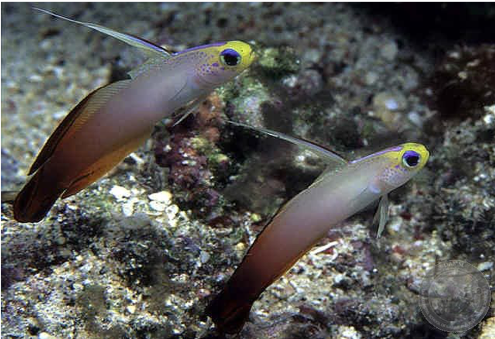Dartfish Information

Dartfish are a species of fish belonging to the family Microdesmidae. They are a saltwater species that share a strong resemblance with gobies and blennies. Classification for dartfish species has changed over the years. The fire dartfish, also known as a firefish, was originally classified as a blenny or goby prior to 1986. Dartfish originate from the Indo-Pacific Ocean. They take up residency through ranges such as East Africa to the Hawaiian, Marquesan and Pitcairn islands, north to the Ryukyu Islands, south to New Caledonia and the Austral Islands and throughout Micronesia and the Solomon Islands. Much like gobies, dartfish are a relatively small fish with long eel-like bodies. At most, some species only reach 4 inches in length. They are often vibrantly colored with mesmerizing shades of red, orange, yellow, blue, purple, green and black. Another feature of the dartfish is their elongated, split dorsal fin. This fin is used not only as a way to signal other dartfish, but as a locking device similar to what triggerfish have. That means their dorsal fin helps keep them locked in place when they are hiding.
Dartfish are carnivorous and will feed off of planktonic animals such as brine shrimp, mysid shrimp and krill. Fire dartfish will feed in groups as they swim into the currents near reefs where their prey is present. When not feeding in open water, dartfish require multiple hiding places, like rock crevices, along a reef. Dartfish also like to burrow in the sand, but require at least 2 inches of substrate to make a proper burrow. The dartfish name is a reference to how they dart quickly up and down out of their burrows when they perceive danger. It’s not unusual for dartfish to live in small groups with some fish even inhabiting the same burrow. For territorial purposes, fire dartfish require 10-20 square inches of vertical space between each other to avoid disputes.
Dartfish are indeed a popular aquarium fish because of their colors and temperament. It is suggested to stock your tank with at least 4 dartfish at a time. Some species of dartfish will then establish a dominance hierarchy from there, but are otherwise very cooperative with other species. One interesting fact discovered about captive dartfish is that they will jump out of the tank if they are startled. A tight lid or netting over the tank is suggested to prevent any casualties or escapes. Dartfish populations are spread out and difficult to track in the wild, but the species in general seems to be a low priority for conservation concerns at this time.
